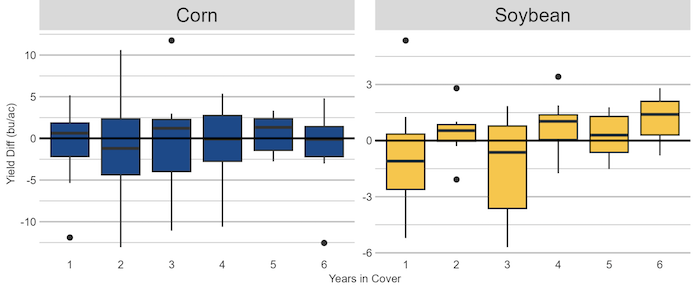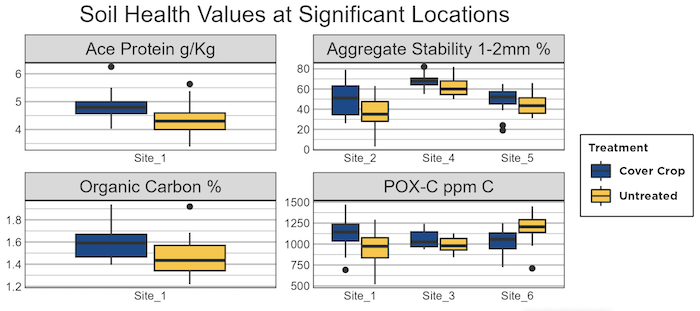Quantifying Results
Given these questions, the Iowa Soybean Association (ISA) Research Center for Farming Innovation (RCFI) team established a multi-year project in attempts to quantify some of the changes from continued use of cover crops in fields across the state. Today, we have 15 trial locations around the state that have continued with support from ISA. Our longest running trials will be entering their eighth year of the project in 2024. These trial sites consist of cover crops seeded in the same strips each fall, with uncovered check strips for comparison.Improved Yield Stability
When looking at the yield differences, changes have been small and slow to show. No matter the cash crop, yields have been variable especially in the first few years of cover crop implementation. From 108 sites years analyzed, yield differences for both corn and soybean hovered near even when looking at years in cover (Fig. 1), with soybeans seeing a slight increase in yield during the later years. Average responses in corn ranged from approximately -1.25 to 1.25 bu/acre and soybeans between approximately -1.5 to 1.5 bu/acre. When looking across years in cover, yield variability is minimized with continued use of a cover crop beyond three to four years, indicating improved yield stability. The important takeaway from this is that while we don’t see a significant yield increase, we don’t see significant losses either.
Soil Health Indicators
Soil health sampling was completed in 2022 and 2023 in accordance with the NRCS CEMA 216 standard with partial funding from USDA NRCS. In addition to the basic suite of soil measurements, this testing standard included organic carbon, aggregate stability, soil respiration, POX-C and ACE protein. Of these soil health test measurements, our results showed little or no change between the cover and no-cover strips across sites.




Post a comment
Report Abusive Comment